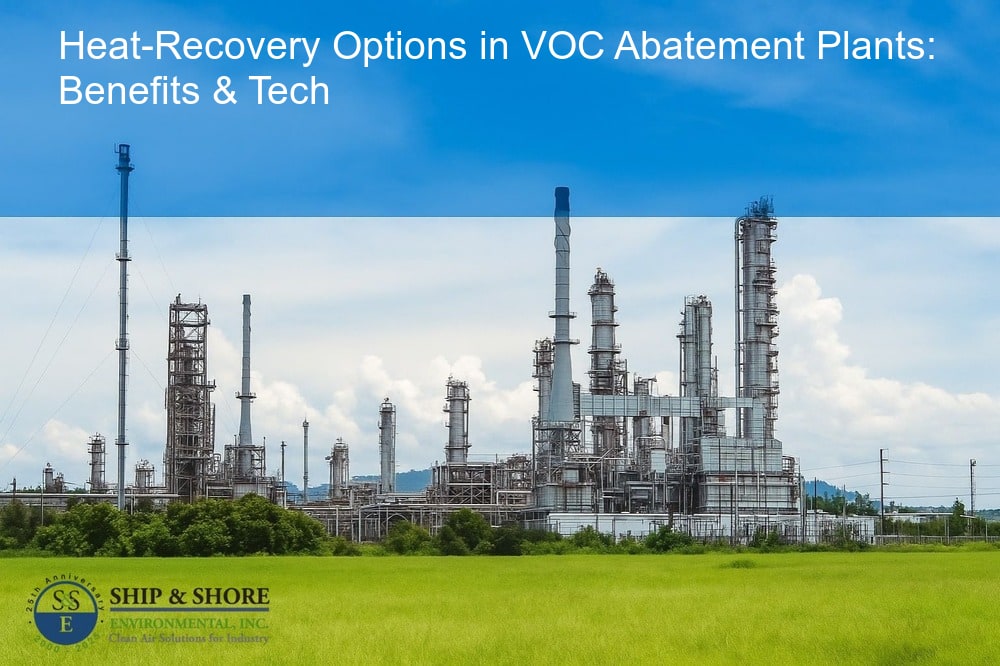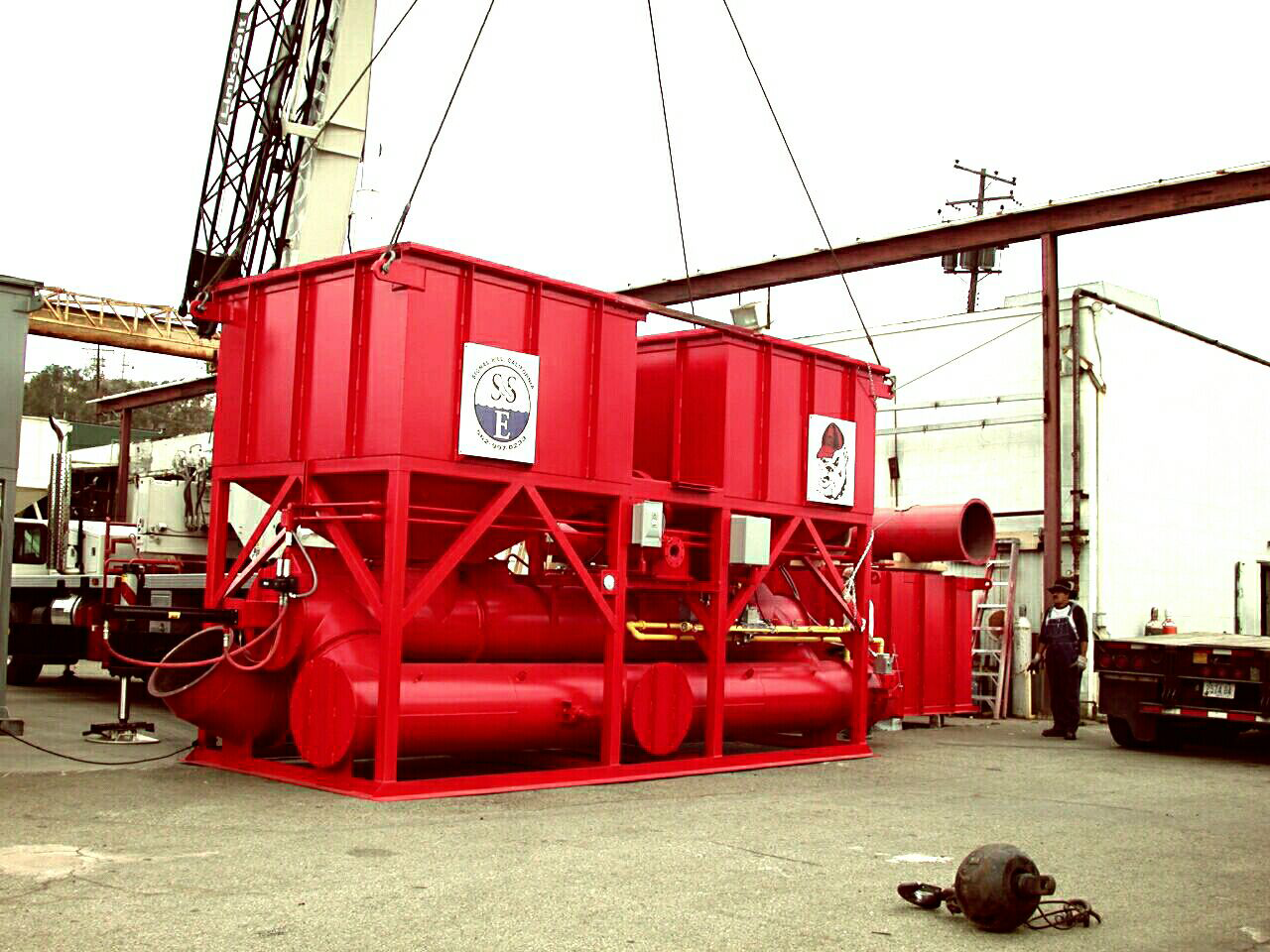
Maximizing Efficiency with Heat-recovery options in VOC Abatement Plants
October 17, 2025 5:41 amOverview of Volatile Organic Compounds (VOCs) and their impact on the environment
Volatile Organic Compounds (VOCs) are a group of organic chemicals that are significant contributors to air pollution. These compounds can have both short-term and long-term adverse effects on human health and the environment. As we recognize the need for sustainable industrial practices, implementing Heat-recovery options in VOC abatement plants has become a crucial step in mitigating the harmful impacts of these pollutants.
The role of VOC abatement plants in limiting air pollution
VOC abatement plants play a vital role in minimizing the release of volatile organic compounds into the atmosphere. By employing advanced technologies, these plants effectively capture, treat, and reduce VOC emissions from various industrial processes. Adopting these practices not only helps to adhere to stringent environmental regulations but also promotes healthier ecosystems and communities.
Introduction to heat-recovery concepts in VOC abatement plants
In the journey towards more sustainable VOC management, the concept of heat recovery has emerged as a game-changing innovation. During the VOC incineration process, a significant amount of heat is generated, which, if not utilized efficiently, is wasted. Heat-recovery systems capture this valuable energy and repurpose it within the plant or redirect it for other industrial uses. This approach not only enhances the overall efficiency of VOC abatement operations but also offers considerable economic and environmental benefits.
Understanding the process of VOC incineration and heat generation
Volatile Organic Compounds (VOCs) pose significant environmental hazards, contributing to air pollution and adverse health effects. VOC abatement plants are designed to mitigate these emissions, primarily through incineration techniques. At Ship & Shore Environmental, Inc., we understand that the fundamental process involves combusting VOCs at high temperatures, effectively breaking them down into less harmful substances such as carbon dioxide and water vapor. This incineration process not only eliminates hazardous VOCs but also generates considerable amounts of heat as a byproduct. Recognizing the potential of this heat, we can channel it for other uses, thereby enhancing the efficiency of our operations through various heat-recovery options.
Regenerative Thermal Oxidizers (RTOs)
Regenerative Thermal Oxidizers (RTOs) are one of the most efficient methods for heat recovery in VOC abatement plants. RTOs utilize ceramic media to absorb and store heat from the exhaust gases. When new VOC-laden air enters the RTO, the stored heat is transferred to it, reducing the need for additional fuel to maintain the high temperatures required for incineration. This cyclic process significantly improves fuel efficiency and reduces operating costs.
Heat Exchangers
Heat exchangers serve as another vital component in our heat-recovery toolkit. These devices transfer heat from the hot exhaust gases to incoming cooler air. This preheated air requires less energy to reach the incineration temperature, offering substantial energy savings. Heat exchangers come in various designs, such as shell-and-tube and plate-type, each tailored to specific operational requirements.
Waste Heat Boilers
Waste heat boilers are engineered to convert the residual heat from exhaust gases into steam or hot water, which can then be used for various processes within the plant. This not only optimizes the energy use within the facility but can also provide heating for other ancillary services. By incorporating waste heat boilers, we can maximize the utilization of generated heat, contributing to overall plant efficiency.
Heat Recovery Steam Generators (HRSG)
Heat Recovery Steam Generators (HRSG) are another sophisticated option. These systems are integrated with gas turbines or reciprocating engines to capture and convert exhaust heat into steam. The generated steam can drive turbines for electricity production or be used in other thermal applications. HRSGs are particularly advantageous in large-scale VOC abatement operations where substantial amounts of waste heat are available.
Evaluating the efficiency and benefits of heat-recovery options in VOC abatement plants
Implementing heat recovery not only improves the overall efficiency but also offers tangible economic and environmental benefits. Here’s a closer look at the advantages:
- Energy Efficiency: By reutilizing the heat from incineration processes, we can significantly reduce our reliance on external energy sources.
- Cost Savings: Lower fuel consumption directly translates to reduced operational costs.
- Reduced Emissions: Enhanced efficiency means fewer emissions of CO2 and other pollutants, contributing to our sustainability goals.
- Resource Optimization: Waste heat can be used in various plant processes, therefore optimizing resource utilization.
Our focus on thermal energy recovery not only enhances the sustainability of our operations but also ensures compliance with stringent environmental regulations. Importantly, the selection of appropriate heat-recovery options must be tailored to each plant’s specific needs, taking into account factors such as capacity, type of VOCs being treated, and overall operational goals.
Did you know? VOC abatement plants can repurpose heat generated from incinerating pollutants, reducing energy consumption and minimizing environmental impact.
Economic and Environmental Implications of Heat Recovery in VOC Abatement
The integration of heat-recovery options in VOC abatement plants has profound economic and environmental implications. By capturing and reusing heat generated during the VOC incineration process, we can significantly reduce operational costs. This efficient use of energy translates into lower fuel consumption and correspondingly lower emissions of greenhouse gases. The capital investment in heat-recovery systems often pays for itself through energy savings over time, making it a financially sound decision for plant operators. On the environmental front, decreasing the need for additional energy sources mitigates the impact on natural resources, supporting our commitment to sustainability. By leveraging heat-recovery options, we enhance the overall performance and environmental footprint of VOC abatement plants.
Vision for the Future: Innovations and Advancements in Heat-Recovery Options
As we look towards the future, innovations in heat-recovery options in VOC abatement plants hold the potential for even greater efficiencies and environmental benefits. Advanced materials and technologies are being developed to enhance heat exchange efficiencies, enabling plants to recover more energy from the incineration process. For instance, regenerative thermal oxidizers are evolving to provide higher thermal efficiency and lower operational costs. Upgraded designs and smart control systems can optimize the capture and reuse of heat, further reducing the carbon footprint of these systems. By investing in research and development, we aim to bring cutting-edge solutions to the market, ensuring that our VOC abatement plants remain at the forefront of industry standards and environmental stewardship.
Final Thoughts: The Importance of Heat Recovery in Achieving Sustainable VOC Abatement
The importance of incorporating heat-recovery options in VOC abatement plants cannot be overstated. These systems not only improve the economic viability of VOC abatement efforts but also play a critical role in advancing our environmental sustainability goals. By capturing and reusing heat, we make a tangible contribution to reducing energy consumption and minimizing emissions, promoting a cleaner and more sustainable future. As we continue to innovate and refine our technologies, our commitment to efficient and eco-friendly VOC abatement solutions remains unwavering. Embracing heat-recovery solutions is an essential step forward in our mission to create a cleaner, greener world through advanced air pollution control technologies.
FAQ
What are the economic benefits of incorporating heat recovery in VOC abatement?
Integrating heat recovery into VOC abatement processes brings significant economic benefits, including reduced energy costs due to decreased need for additional fuel and a rapid return on investment. Our systems are designed to capitalize on the energy generated during incineration, thus optimizing resource use and providing cost savings for our clients.
How does heat recovery contribute to environmental sustainability?
Utilizing waste heat from VOC abatement reduces reliance on fossil fuels, leading to lower greenhouse gas emissions. This aligns with our environmental commitment by conserving natural resources and minimizing the carbon footprint of industrial operations, fostering a greener and more sustainable future for all.
Can the heat-recovery system in an abatement plant be upgraded for better efficiency?
Indeed, our dedication to innovation means that we continually seek advancements in technology to upgrade the efficiency of our heat-recovery systems. By leveraging new materials and smarter control technologies, we aim to enhance energy recovery and provide our clients with the most advanced and efficient solutions.
What types of heat-recovery options does Ship & Shore Environmental offer?
Our spectrum of heat-recovery options ranges from traditional recuperative systems to more advanced regenerative heat exchangers, each engineered to suit specific plant requirements. We customize solutions to maximize energy efficiency while meeting the unique needs of our clients.
In what ways does Ship & Shore Environmental plan to advance heat-recovery technologies in the future?
We are committed to pioneering the next generation of heat-recovery technologies by investing in research and development. Consequently, we envision a portfolio of enhanced systems that boast superior thermal efficiency and even greater reductions in operational costs and emissions, solidifying our role as leaders in sustainable VOC abatement solutions.
Categorised in: Blog

